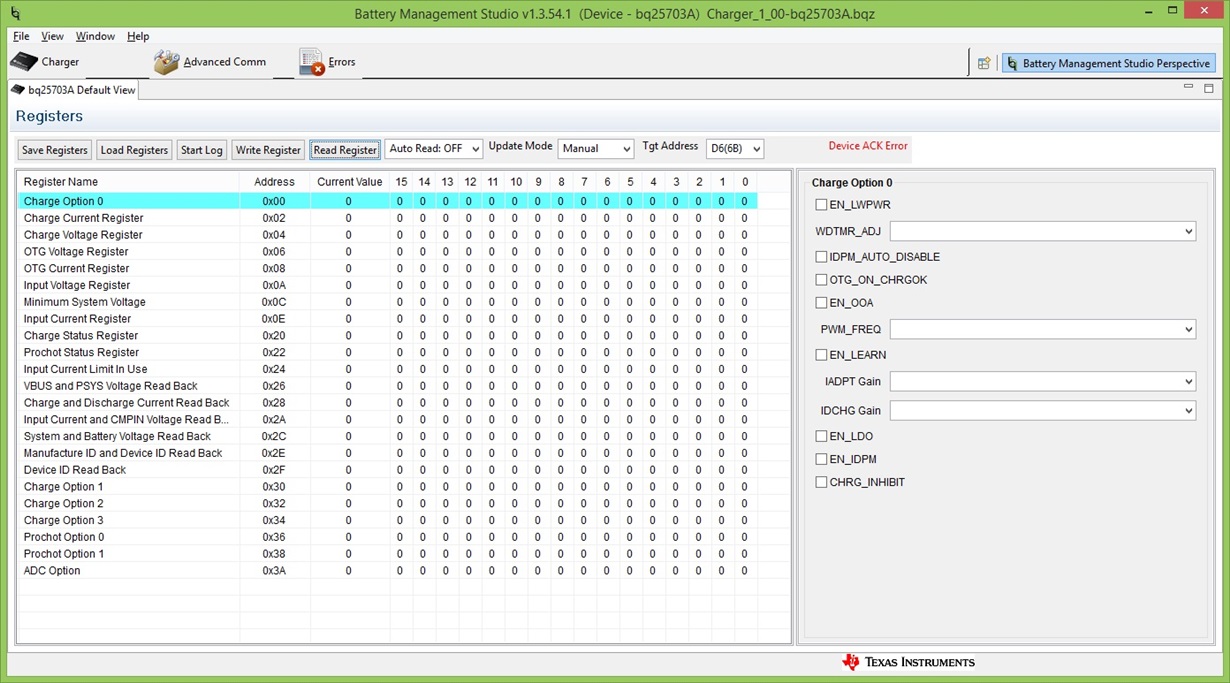Other Parts Discussed in Thread: , BQSTUDIO, EV2400, BQ25700A, BQ25700AEVM-732,
I am testing charging operation using an exact copy of the BQ25703 EVM's example circuit, with EV2400.
After equipment set-up and installing bqstudio(v1.3.54) and downloading and installing the Charger_1_00-bq25703A.bqz file, I followed the EVM User manual instructions.
1. connection.
2. Tgt address to D6(6B) for bq25703A and changed the update mode from immediate to Manual.
3. Read register
4. Screen shows DEVICE ACK Error
NB: When I plugged the EV2400 into my Windows 8.1 Pro computer, it showed up as a "USB Input Device" under the Human Interface Devices category of Device Manager.
Upon starting the bqStudio software, it says "Auto Detected Device : None", but gives no indication as to whether this means the software can't communicate with the EV2400, or the EV2400 target chip.
Is there any way to test if the bqStudio software can at least communicate with the EV2400?





